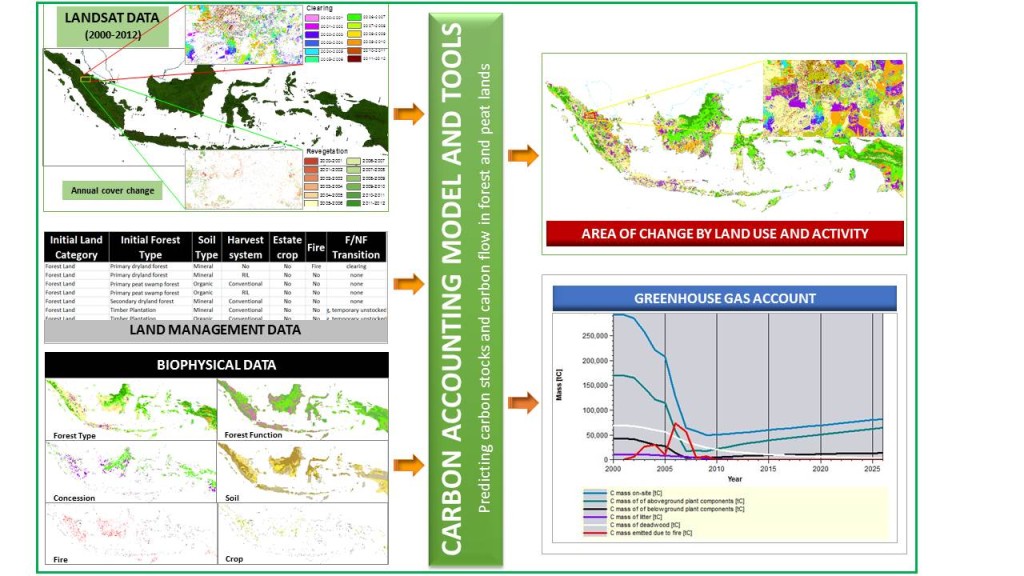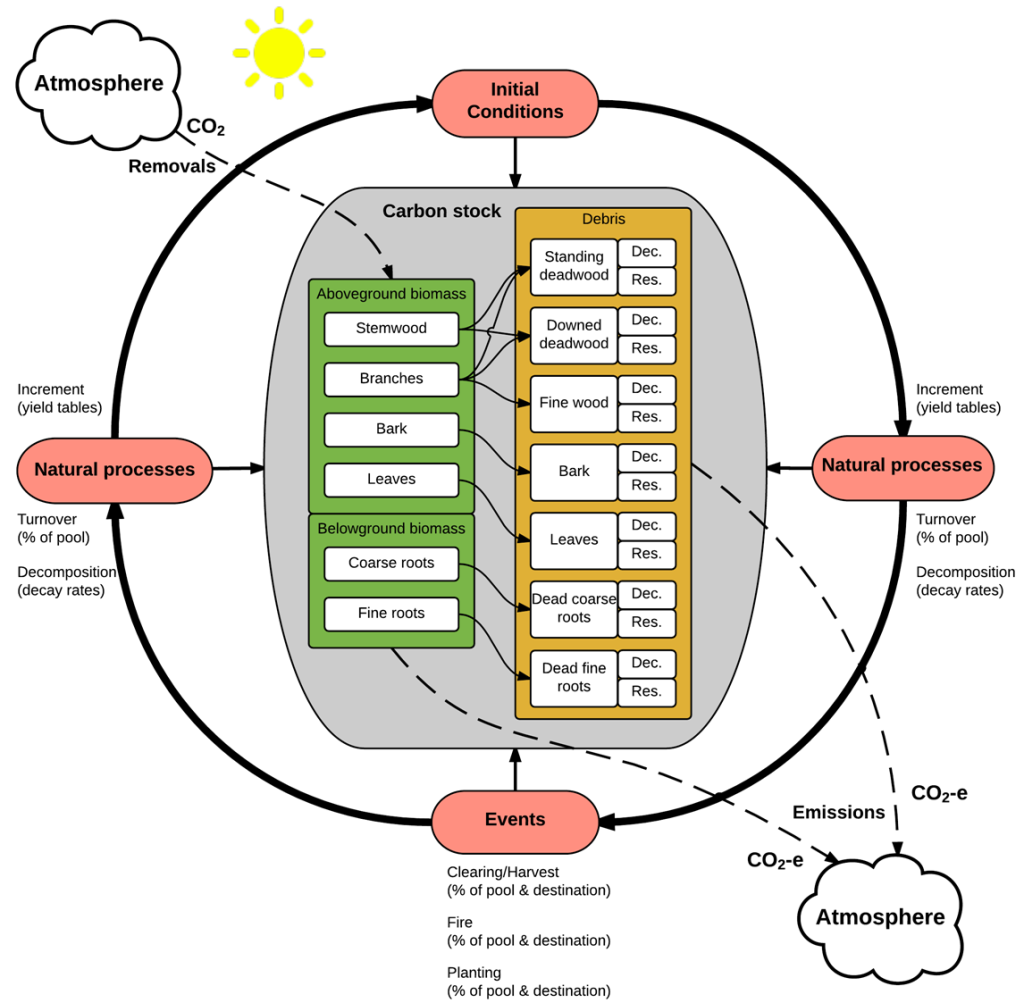The Standard method—data integration and reporting describes the process used by INCAS for quantifying GHG emissions and removals from activities occurring on forest lands including deforestation, forest degradation, sustainable management of forests, and enhancement of forest carbon stocks in Indonesia. This includes data collation, data analysis, quality control, quality assurance, modelling, and reporting.
Input data are derived from each of the INCAS Standard methods. The approach used to integrate these data and produce results is summarised in the following figure.
Modelling uses a mass balance, event-driven approach in which changes to carbon stocks in each carbon pool and flows of carbon between pools are quantified. The following carbon pools and GHG emissions are modelled:
- live aboveground biomass
- live belowground biomass
- debris (deadwood, litter)
- carbon emissions from fire.
The following figure summarises how these pools are modelled.
Annual GHG emissions and removals are derived for defined periods of interest. This approach is used for natural forest, timber plantations, oil palm, and rubber estate crops.
Changes in carbon pools and GHG emissions from mineral soil are calculated using IPCC default emission factors and activity data. Non-CO2 emissions from fire are quantified using IPCC default N:C ratios and emission factors multiplied by carbon released from fire.
Carbon emissions and non-CO2 emissions from organic soil (peat) are modelled using the INCAS Standard method—peatland GHG emissions.
Full details of the Standard method— data integration and reporting are available here.



